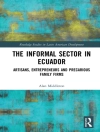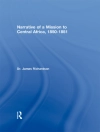Research and literature on nanomaterials has exploded in volume in recent years. Nanotubes (both of carbon and inorganic materials) can be made in a variety of ways, and they demonstrate a wide range of interesting properties. Many of these properties, such as high mechanical strength and interesting electronic properties relate directly to potential applications. Nanowires have been made from a vast array of inorganic materials and provide great scope for further research into their properties and possible applications. This book provides a comprehensive and up-to-date survey of the research areas of carbon nanotubes, inorganic nanotubes and nanowires including: synthesis; characterisation; properties; applications Nanotubes and Nanowires includes an extensive list of references and is ideal both for graduates needing an introduction to the field of nanomaterials as well as for professionals and researchers in academia and industry.
قائمة المحتويات
1: Carbon Nanotubes; 1.1: Introduction; 1.2: Synthesis; 1.3: Structure, Spectra and Characterization; 1.4: Chemically modified nanotubes; 1.5: Electronic Properties; 1.6: Carbon nanotube composites and their properties; 1.7: Applications, potential and otherwise; 2: Inorganic Nanotubes; 2.1: Introduction; 2.2: Synthetic methods; 2.3: Specific cases; 2.4: Properties; 3: Inorganic Nanowires; 3.1: Introduction; 3.2: Synthetic strategies; 3.3: Elemental nanowires; 3.4: Metal oxide nanowires; 3.5: Metal nitride nanowires; 3.5: Metal carbide nanowires; 3.6: Metal chalcogenide nanowires; 3.7: Ga S, In P and other semiconductor nanowires; 3.8: Miscellaneous nanowires; 3.9: Useful properties and potential applications;
عن المؤلف
A. Govindaraj obtained his MSc and Ph D degrees from the University of Mysore. His main research interests are in fullerenes, nanowires and nanotubes in which areas he has published extensively. He is a Principal Research Scientist at the Indian Institute of Science.












